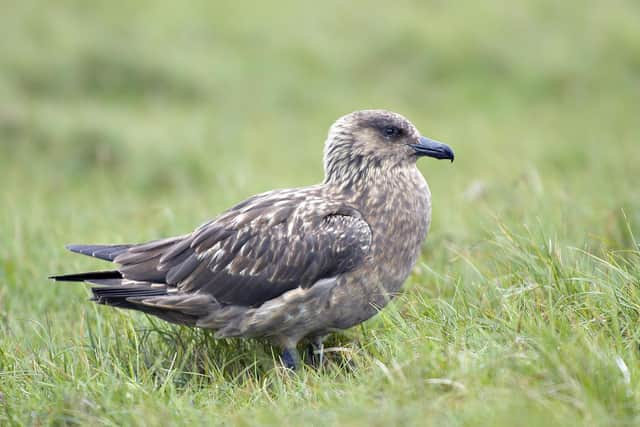Seabird deaths 'catastrophic' as census reveals scale of devastation to numbers due to bird flu
Urgent action is needed to save Scotland’s seabirds, it has been claimed, as a report reveals for the first time the extent of the devastation on populations caused by avian flu.
The RSPB report shows highly pathogenic avian influenza (HPAI) – commonly known as avian or bird flu – has reversed the few positive or stable trends in Scottish seabird numbers counted in the most recent census only last year.
Advertisement
Hide AdAdvertisement
Hide AdOf the 20 seabird species for which experts could ascertain population trends in Scotland, 17 (85 per cent) are now in decline.


Prior to the HPIA outbreak first recorded in 2021, there were 14 (70 per cent) in decline – some by up to 79 per cent over 20 years – with only three species, the gannet, great skua and European storm-petrel, increasing in numbers.
The new report reveals that gannets have since suffered a 22 per cent decline while more than three quarters (76 per cent) of Scotland’s great skuas have been lost to HPAI.
Scotland is home to up to 60 per cent of the global breeding population of great skua and 46 per cent of Gannets, meaning these declines have international implications.
The sandwich tern, one of only three "stable" species before the outbreak, has since declined by 22 per cent, likely due to HPAI. There were "substantial further mortalities" for species such as kittiwake, guillemot and black-headed gull last year.
The RSPB said Scotland’s seabirds were already being significantly impacted by a range of pressures, including climate change and unsustainable fishing practices, before HPAI emerged.
Species such as Arctic skua, lesser black-backed gull, herring gull, common tern and Arctic tern, which were all in decline prior to 2021, have been impacted further by HPAI.
Paul Walton, RSPB Scotland’s head of habitats and species, said: "The sight of so many dead seabirds on our cliffs and beaches over the last few years has been heart-breaking and left many fearful for their future. Those fears are well-founded.
Advertisement
Hide AdAdvertisement
Hide Ad"The declines in Scotland's seabirds revealed by the Seabird Count census last year are nothing short of catastrophic. And now we know the true situation is even bleaker as we see the additional population declines that have been wrought by the new threat from bird flu originating in East Asian poultry."
RSPB Scotland called for immediate action on climate change, including keeping fossil fuels in the ground and decarbonising Scotland’s energy systems, while ensuring offshore wind farms are only located in the least damaging places for seabirds and other marine wildlife. They said urgent action was needed to monitor fishing at sea and eliminate seabird deaths from bycatch – the unintended trapping of birds in fishing gear, which is estimated to kill thousands of seabirds each year. Other measures, they insist, must include a rolling programme of island restoration to eliminate invasive non-native species.
Mr Walton said the new report "needs to be the wake-up call that finally makes a difference".
The origins of the current strain of HPAI, H5N1, can be traced back to intensive poultry operations in China in 1996. It later spilled into wild bird populations and has developed into a global ecological crisis.
Comments
Want to join the conversation? Please or to comment on this article.